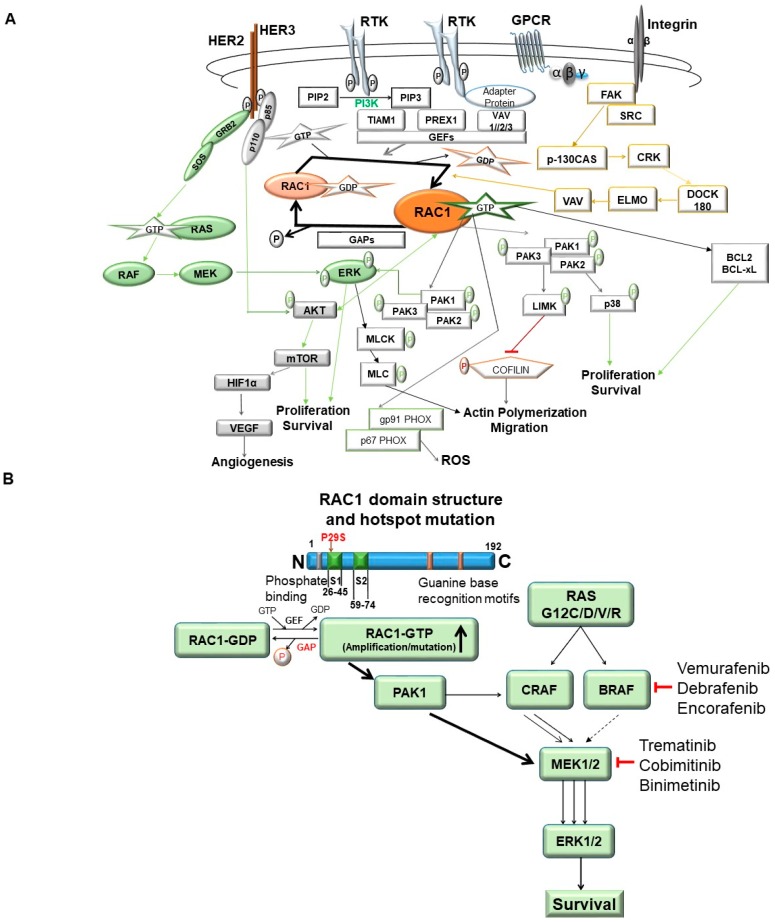Figure 5.
RAC1 signaling in tumor cells: RAC1 signaling in tumors cells and the involvement of the RAC1 protein in tumorigenesis and drug-resistance as presented in the review. (A) represents the RAC1 signaling pathway. RAC1 cycles between an inactive-GDP-bound form, and an active-GTP-bound form. Signals from cell surface receptors, for example, G-protein coupled receptors (GPCRs), receptor tyrosine kinases (RTKs), and integrins (alpha, beta) converge on the guanine nucleotide exchange factors (GEFS: VAV, TIAM, PREX), which converts RAC1 into its active state. Once activated, RAC1 can bind to a wide range of effectors, which in turn influence both a variety of oncogenic phenotypes like proliferation/survival, actin remodeling/migration, metastasis, and angiogenesis in tumor cells. In the process of functions mentioned above within tumor cells, RAC1 signals are closely knit to both the PI3K-AKT and the RAS-MAPK pathways integrating extracellular stimulations with oncogenic alterations. Other mechanisms, such as the stabilization of the active form of RAC1 by sumoylation or sequestration of the inactive form by guanine nucleotide dissociation factors (GDIs), can also influence the level of RAC1 signaling. Schematic illustration of RAC1 signaling pathways and functions of its effectors are presented. Green font represents signaling events following phosphorylation-mediated activation of the protein. The red font represents signaling events following phosphorylation-mediated inactivation of the protein. The blue border represents adaptor protein, the orange border represents GDP state/inactivating phosphorylation, the green border represents activated phosphorylation, the yellow border represents metastatic pathway, the yellow arrows represent metastatic pathway network, the green arrows represent proliferation/survival network, and the red line represents inhibition of signals. (B) illustrates the involvement of RAC1 in tumorigenesis and drug-resistance: RAS signaling-mediated tumorigenesis and the RAC1-PAK1 pathway-mediated resistance against RAS–RAF-MEK pathway-targeted drugs in cancers has been illustrated. RAC1 plays a cardinal role in the development of drug-resistance, especially in BRAF-mediated cancers like melanoma in which the development of resistance to BRAF inhibitors like vemurafenib, debrafenib, and encorafenib for a certain time leads to the hyper-activation of RAC1. The hyper-activation of RAC1 may either occur in the presence of upstream RTK-activation or due to the accompanying amplification or hot-stop mutation of RAC1. Under hyper-activation of RAC1, the RAC1-GTP activates PAK1, leading to the downstream activation of MEK and bypassing the upstream BRAF inhibition.

